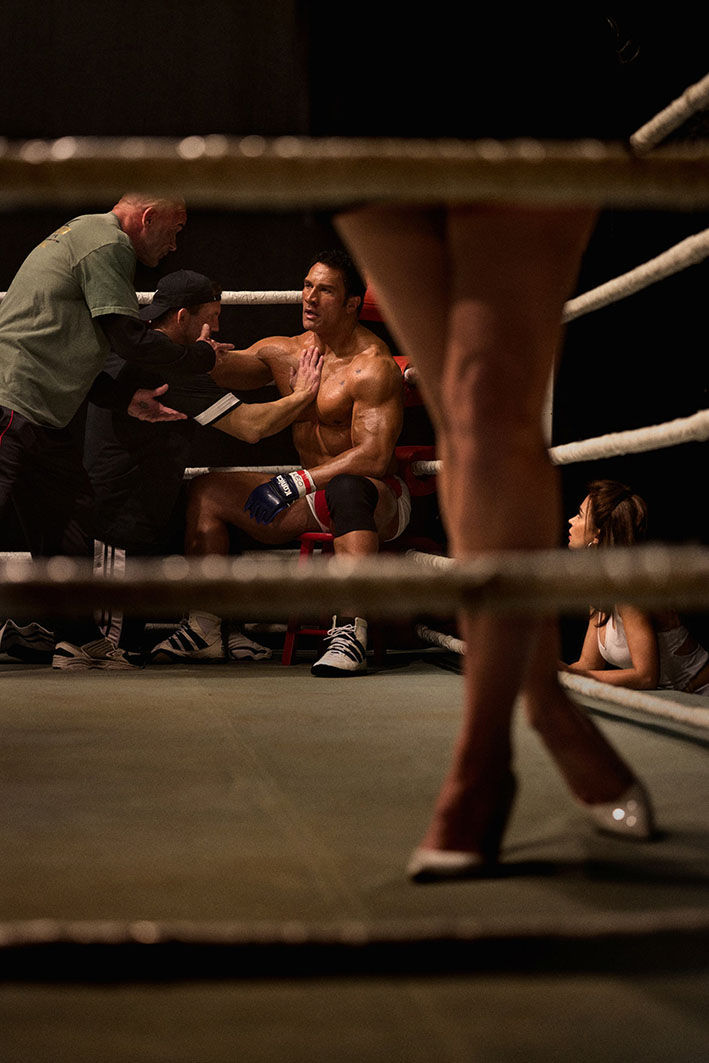THE SMASHING MACHINE
- ARTISTIC HUB MAGAZINE

- Sep 2
- 3 min read
Updated: Sep 3
The fight that begins when the ring falls silent
Last night, on September 1 in Venice, The Smashing Machine premiered in the festival’s main competition. When the final frame faded, the hall held a beat of silence, and then the audience rose for a standing ovation that lasted 15 minutes. Dwayne Johnson and Benny Safdie were visibly moved. It was a moment when the film resonated not only on screen, but also in the hearts of those watching.

The Smashing Machine tells the story of Mark Kerr, a pioneering UFC fighter whose life was far more complex than the image of an undefeated champion. Safdie builds the film on the foundations of the 2002 documentary about Kerr and on the fighter’s own testimony. The narrative follows him from the early days in small, barely attended venues in the American South, to the dazzling nights of Pride tournaments in Japan, all the way to the moments when fame and strength could no longer conceal the fractures beneath the surface.

In the role of Kerr, Johnson portrays a man who was a symbol of power inside the ring, yet battled addiction and personal demons behind closed doors. By his side stands Emily Blunt as Dawn Staples Kerr. Their relationship is depicted as fiery, filled with love and conflict, yet unbreakable. Safdie frames their arguments as emotional matches, with the same tension and rhythm as a fight in the octagon. This dynamic gives the film its warmth and shows that love, no matter how turbulent, can still be the final refuge.
Nala Sinephro, the British and Belgian composer, writes a score of harp and electronics that gives the story a quiet inner rhythm. Maceo Bishop’s camera keeps you close to the ropes, as if you were seated among the crowd. Real fighters lend texture to the world on screen, including Ryan Bader as Mark Coleman and heavyweight boxing champion Oleksandr Usyk as Igor Vovchanchyn.
The premiere in Venice was met with strong reactions. The Independent and Variety praised Johnson for delivering the performance of his career. Many described his transformation as a turning point, while Emily Blunt was celebrated as sensational. The Guardian emphasized that Safdie avoids sports clichés and focuses on vulnerability and the silence that follows the fight. Other voices, including Decider and Vulture, noted that the film sometimes remains too subdued, and The Times went as far as to give it only two stars. Yet the consensus remains clear: Johnson revealed a side of himself that audiences had never seen before, and it left a lasting impression.
The Smashing Machine is much more than a biography of an athlete. It is the story of a man whose strength was both a gift and a burden. The film reminds us that the most important battles are fought when the lights go out and the crowds disappear. Last night in Venice, that truth resonated with full intensity, in a hall that knows how to recognize the moments when cinema becomes life.
Watch the official trailer for The Smashing Machine, released by A24 on their YouTube channel.
The creative team underscores the ambition of the project. The film was edited by Benny Safdie, with costume design by Heidi Bivens, prosthetic design by Academy Award winner Kazu Hiro, visual effects supervision by Sean Devereaux, and music supervision by Linda Cohen. The original score is by Nala Sinephro, and casting was led by Jennifer Venditti.



